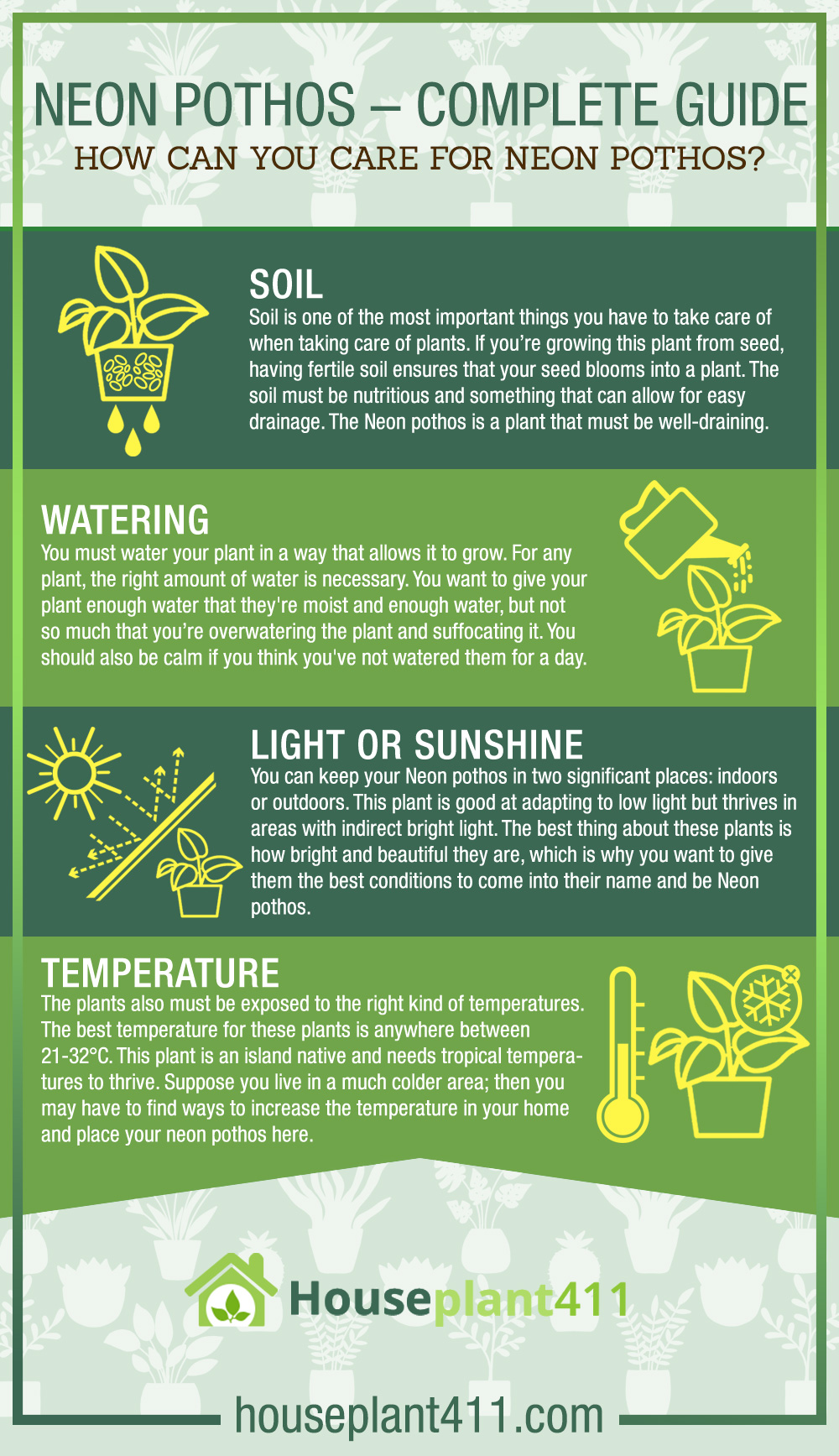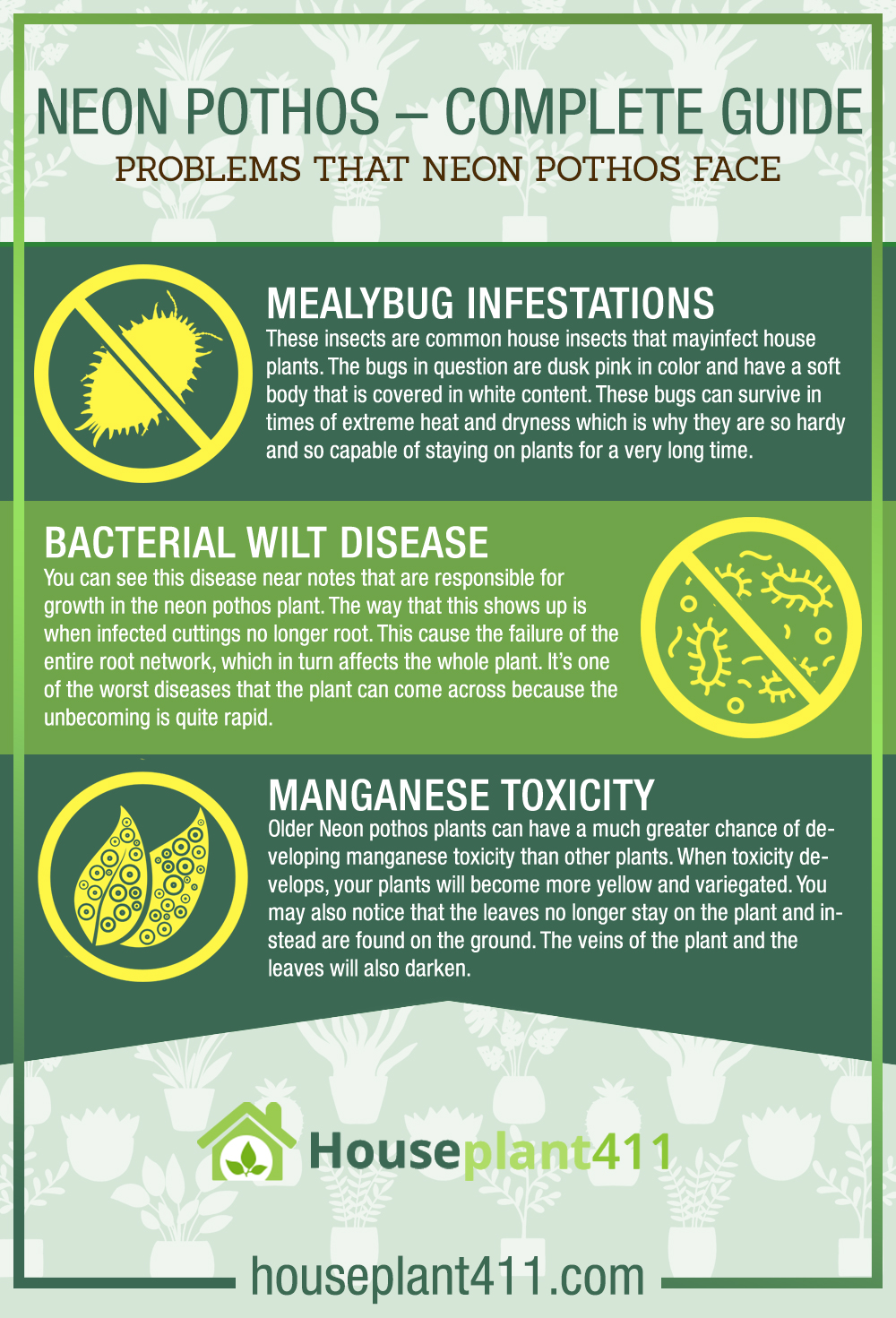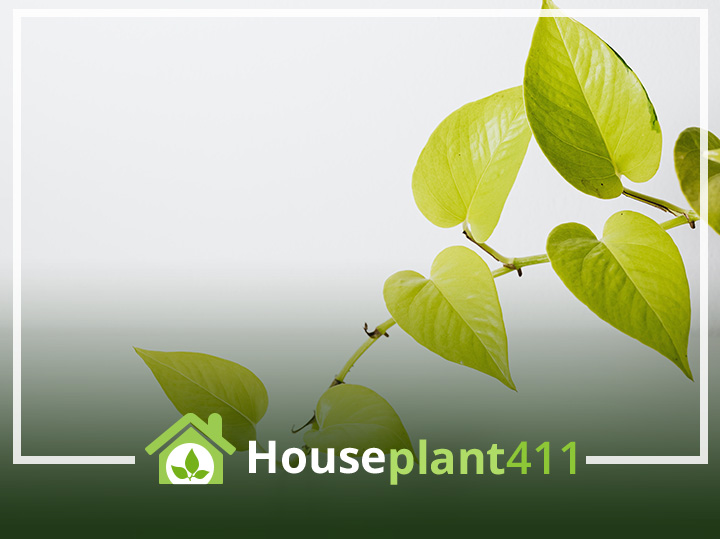Neon Pothos is a houseplant that you can find, grow and propagate with a lot of ease. Many prefer to keep these plants as they brighten up their garden and house. These plants are beautiful and don’t require extensive care on your end. They are often titled low-fuss or no-fuss plants, as they can brighten up any corner of your house and make it seem more put together.
Remember that these plants look beautiful but can also harm your pets and you if you ingest them. Thus, keeping these plants in a place where your pet has no or limited access to them is necessary.
Neon Pothos (Epipremnum aureum) is called Neon as it has brightly colored leaves. They are often seen climbing up different trees and varieties, which is why many people opt to have these plants around their homes. However, if you have them in your home, taking care of them as best as possible is necessary.
Read on as we help provide a complete guide on Neon Pothos and ways to care for them in your home.
How Can You Care for Neon Pothos?
Neon Pothos are plant species, so taking care of these plants comes under the same factors as any other plant. You must be careful of plants’ growth factors, such as sunshine, water, and soil. These three factors, amongst others, are the primary considerations for the care of this plant.
Soil
Soil is one of the most important things you have to take care of when taking care of plants. If you’re growing this plant from seed, having fertile soil ensures that your seed blooms into a plant. The soil must be nutritious and something that can allow for easy drainage. The Neon pothos is a plant that must be well-draining. It must have peat and perlite, so the water only stays in one place for a short time. If the soil is not well-draining, it may be that the plant becomes rotten and won’t have the ability to grow.
You don’t have to be too picky about the soil, and yet it’s necessary to have a regular soil mix that works well with the plant. The plants can even grow if they’re slightly rootbound, so they’re relatively simple. If you think the roots are getting too crowded, please repot the plant. Knowing how you can initiate the house plant is also essential.
The first time you get your plant, it’s essential that you shift it into a pot where it can grow. If you want to remove it from a pot, then you must ensure that your lawn has enough place for growth. Outside you have to ensure that the soil is efficient and moist.
However, as we know, the plant does its best in regularly drained or well-drained soil.
You could also grow Neon pothos in water jars. However, this growth will take longer than plants that grow in the soil. You should also pick a pot that allows for drainage and air travel.
These plants generally need soil with a pH of 6.1 to 6.5. But if the soil pH is beneath this, there won’t be much of an issue. You would also need to fertilize your soil as you proceed.
Watering
You must water your plant in a way that allows it to grow. For any plant, the right amount of water is necessary. You want to give your plant enough water that they’re moist and enough water, but not so much that you’re overwatering the plant and suffocating it. You should also be calm if you think you’ve not watered them for a day. Just water them when you remember to, as these plants are generally quite receptive to water whenever they get it.
Set a schedule for watering and stick to it, as this prevents you from going overboard with water or drying the soil out. You may consider repotting if the water is too much. Letting your plant sit in saturated soil means you will lose a fair amount of leaves, and your plant may become much more yellow.
To prevent your plant from getting waterlogged, we recommend using a pot with drainage holes that allow water to drain out. Between your watering, you should ensure that the top two inches of the soil are dry so you can water them all over again.
Light or Sunshine
You can keep your Neon pothos in two significant places: indoors or outdoors. This plant is good at adapting to low light but thrives in areas with indirect bright light. The best thing about these plants is how bright and beautiful they are, which is why you want to give them the best conditions to come into their name and be Neon pothos.
If you’re placing the plant outside, you have to be careful still, as placing them in direct sunlight can cause them to burn and die. If you’re not experienced with these plants, then it’s careful to consider that they grow best in the shade of other plants, so those are the kind of conditions that you want to continue to provide.
Keeping these plants outdoors may be a good idea. If you live in an area with cloudier conditions than sunny conditions, placing these plants outdoors is one of the best things you can do. However, if your area is exceptionally sunny, you should change the position of your plant and place it in the shade of other plants.
Similarly, you don’t want to keep your plants in a dark place as the leaves will turn smaller, and plants won’t grow quite like you would want them to.
Temperature
The plants also must be exposed to the right kind of temperatures. The best temperature for these plants is anywhere between 21-32°C. This plant is an island native and needs tropical temperatures to thrive. Suppose you live in a much colder area; then you may have to find ways to increase the temperature in your home and place your neon pothos here. These plants can also not survive harsh winters, so you may want to move them inside your house when it gets cold.
Due to being native to the Islands, they also need a fair amount of humidity to grow. The percentage of humidity should be up to 50% at the very least. If you find that the humidity is not enough, we recommend applying a humidifier to bring some more vapor into your environment.

How Can You Propagate Your Neon Pothos?
The people who love these plants also want to ensure they can have enough plants in their homes. You can learn how to propagate these plants on your own, as they are exceptionally easy ot grow.
If you have stem cuttings for this plant, you can use those. You can get these cut by being particular. If you acquire these cuttings while pruning, then that may be enough. You can create a much more whole plant by placing different cuttings into the same pot as the plant and ensuring that they get the conditions for perfect growth.
You can propagate your neon pothos plants in the following ways:
- Take stem cuttings from a plant you own with more nodes.
- You will remove the bottom leaves from the stem cutting so the node is out in the open. Once you’ve done that, you can place the cutting into the flowerpot with the plant or in whatever place you’ve already kept your plant. You want to ensure that there are some leaves atop each cutting.
- You can then place a jar with water and place the cuttings in this jar. It would help if you covered the exposed nodes with water; the leaves should be above water. This ensures a much more successful propagation.
- You want to keep these jars in an area where there is indirect light in standard amounts. You also want to replace the water as often as you can.
- You have to observe the plants until it seems like the root formation is occurring. Once you feel like the roots are long enough they should be an inch long- you can then transfer your plants back into the soil and pot them in moist soil that helps with their growth,
- You then want to place the cutting back where you kept the cutting and ensure that the soil is moist for the first two weeks of growth.
- After the first two weeks, you can establish a watering routine and stick to it as best as possible.
Problems that Neon Pothos Face
Mealybug Infestations
These insects are common house insects that mayinfect house plants. The bugs in question are dusk pink in color and have a soft body that is covered in white content. These bugs can survive in times of extreme heat and dryness which is why they are so hardy and so capable of staying on plants for a very long time. They often feed on neon pothos which can destroy the plants and cause their growth to reduce.
When mealybugs feed on these plants, they stunt growth, which causes the leaves and plants to turn yellow and rot. There might be times that the bugs can cause plant death. The way to ensure that the neon pothos survives is by removing these bugs physically whenever you see them. If that doesn’t work, then rubbing alcohol can surely help.
Bacterial Wilt Disease
You can see this disease near notes that are responsible for growth in the neon pothos plant. The way that this shows up is when infected cuttings no longer root. This cause the failure of the entire root network, which in turn affects the whole plant. It’s one of the worst diseases that the plant can come across because the unbecoming is quite rapid. The root network is related to the whole entire system in the sense that the veins of the stems and the leaves will all respond by wilting and turning black.
The bacteria completely takes over the plant and you would have to ensure that it goes through a complete sanitation program. If you see one of your plants respond this way, it’s necessary that you treat the plant as a hazard site, and any seeds, soil, or pots must be packed and discarded from the place of growth.
You should also ensure that you sanitize all the pots and benches before you plant them all over again.
Manganese Toxicity
Older Neon pothos plants can have a much greater chance of developing manganese toxicity than other plants. When toxicity develops, your plants will become more yellow and variegated. You may also notice that the leaves no longer stay on the plant and instead are found on the ground. The veins of the plant and the leaves will also darken. The best way to combat this is by not fertilizing with a fertilizer that has manganese in it.
You should also try adding lime to the soil so that the pH range increases and toxicity is less.

Final Thoughts
You may have to take care of many other things when it comes to taking care of Neon Pothos. You must look out for common pests when propagating these plants and taking care of them. There are also common problems that you may have to investigate when growing these plants. However, we have done our best to provide you with the most information on many fundamental problems regarding light, temperature, and soil that you may face with these plants.

